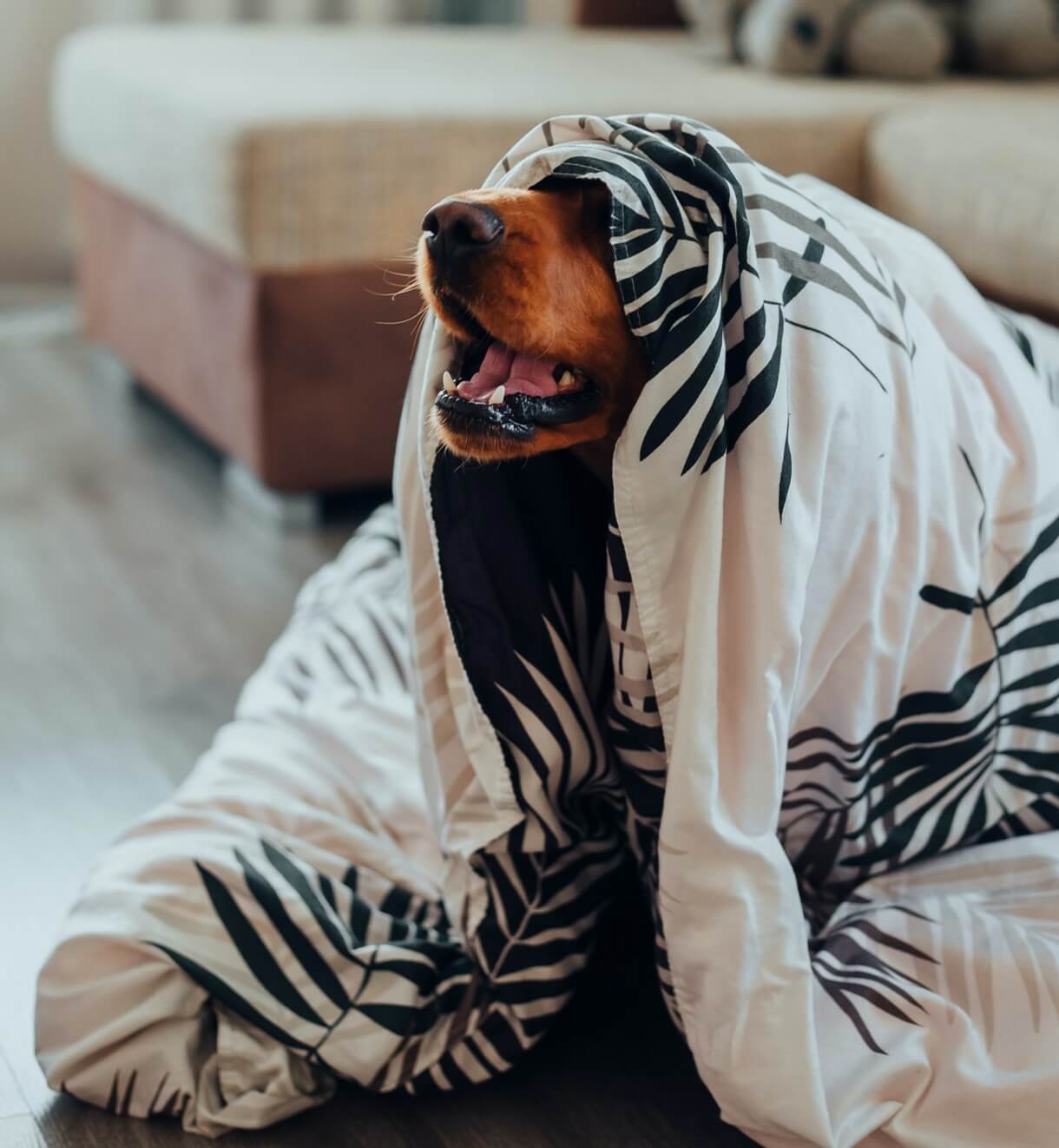Who switched off the lights?

Pet proofing your house could happen in stages, tackling one room at a time, or if you are brave enough, you could do everything at once. The set up might also change as and when your home dynamics change, but predominantly, the thing to remember is that the environment your pet lives in should be pet friendly and free from potentially harmful objects.
When you first bring home a puppy or kitten, there are quite a few things to consider changing in your home. As they get older, wiser, and more familiar with their surroundings you can decide on what you might want to change back to the “pre-pet state”.
Let’s get down to business. We literally mean down. To be able to experience first-hand what your pet sees, it is probably a good idea to get on your hands and knees and go through your home to see what you see at their level. It might feel a bit strange, but believe me, it’s worth it!
There are obvious things to look out for, like sharp objects or small kids’ toys lying around. The Petinsurance.com.au team thought it would be helpful if we ran through each room of your house to point out a few things to look out for.
Kitchen
Now, this is an area where a pet can have a field day. The best option, if it is a dog, is to prevent access with a pet-proof gate but obviously, if it is a cat, they will still easily be able to jump over the gate.
If you are unable to keep them out of this area, here are a few things to be aware of:
Rubbish bins – A dog will eat basically anything, therefore, the contents of your bin could be very appealing to them. Unfortunately, there are certain things in the bin that could be harmful, like chicken bones, so make sure they cannot access the bin.
Kitchen cupboards – due to the fact that we all keep harmful things in our cupboards like detergents, floor cleaners etc, it is best to, if possible, put child-proof locks on these.
Large appliances – ensure that the washing machine and dryer doors are closed so that your pet doesn’t climb into it while you are not watching.
The stove – Hot plates can be very dangerous if a cat steps on it and a boiling pot of water falling on a pet would be devastating. Where possible, try to keep your pets out of the kitchen while cooking.
The bathroom
Medicines – whether for human or pet consumption, should always be locked away out of reach of small children and our furry friends.
Toilets – some pets enjoy drinking water from the toilet (yes, you heard right!). It is unhygienic and the water could contain chemicals that are harmful to your pet. Make sure that you keep the lid of your toilet down.
Bath toys – unless you want them full of punctures and unable to float, put them away when not using them.
Other rooms
Electrical cables – this is a tricky one but also super important as an electric shock could be fatal to your pet. Each home is different, but try to keep cables off the ground, block them with furniture or tape them to skirting boards. You can also switch plugs off when you go out and have to leave your pet indoors.
Cupboards and drawers – for your own sanity keep these closed and make it inaccessible for your pet. We’ve all heard horror stories of expensive shoes being chewed away so don’t let a pair of yours be one of them!
The garage
Chemicals – make sure that all chemicals are stored safely and that if there are spills, they are cleaned up immediately and properly.
Tools – tools with sharp edges could harm your pet and small items like nails and screws could be swallowed by your pet. Make sure they are put out of reach and in containers.
The garden
Fencing – make sure your fencing is strong and high enough to keep your pet safe inside and keep other harmful things from outside getting to them.
Plants – make sure that the plants you have in your garden and pots are pet-friendly just in case they decide to take a bite from them.
Fertilizers and poisons – where possible try using organic alternatives such as manure and compost. If you must use toxic fertilizers and poisons, make sure they are safely stored and locked away.
Pool – if you are lucky enough to have one, it is recommended to keep it closed when not in use. Some dog breeds enjoy a dip now and again, but it would be better if they do that with you around.
Balconies and upper-storey rooms
Make sure that there is a fence or wall around your balcony so that your pet doesn’t fall down from them. If you have high windows, where possible, put pet proof screens up which will double up as insect screens. This keeps your loved ones in and the unwanted bugs out.
Other random tips
For your own sanity and safety, make sure that rocking chairs don’t have anything behind them that could break if your dog decides to jump on it.
If you make use of doggy or cat blankets or beds make sure they are placed far from a fireplace. You don’t want to see your house go up in flames!
Your pets are just as curious as your little two-legged family members, so it would be wise to remove all breakable items from low tabletops.
